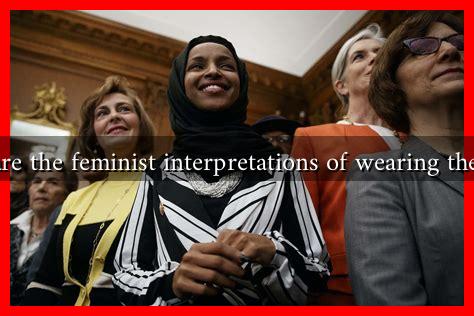-
Table of Contents
What are the Feminist Interpretations of Wearing the Hijab?
The hijab, a traditional headscarf worn by many Muslim women, has been a subject of intense debate and discussion within feminist circles. While some view it as a symbol of oppression, others see it as an expression of empowerment and identity. This article explores the various feminist interpretations of wearing the hijab, shedding light on the complexities surrounding this garment.
The Hijab as a Symbol of Empowerment
For many women, wearing the hijab is a personal choice that signifies empowerment and autonomy. Feminist scholars argue that the hijab can be a form of resistance against Western beauty standards and societal expectations. Here are some key points that illustrate this perspective:
- Personal Agency: Many women choose to wear the hijab as an assertion of their identity and beliefs. This choice can be seen as a rejection of societal pressures to conform to certain beauty ideals.
- Religious Expression: For devout Muslim women, the hijab is a religious obligation that fosters a sense of belonging and community. Feminists argue that this choice should be respected as part of their cultural and religious identity.
- Political Statement: In some contexts, wearing the hijab can be a political act of defiance against oppressive regimes or Western imperialism. Women may don the hijab to reclaim their narrative and assert their rights.
The Hijab as a Symbol of Oppression
Conversely, some feminist interpretations view the hijab as a symbol of patriarchal oppression. Critics argue that the hijab is often enforced by societal norms or legal mandates, stripping women of their autonomy. Key arguments in this perspective include:
- Coercion and Control: In certain countries, women are legally required to wear the hijab, which can be seen as a violation of their rights. Feminists argue that this coercion undermines the very essence of feminism, which advocates for choice and freedom.
- Objectification: Some feminists contend that the hijab can perpetuate the idea that women are responsible for men’s behavior. This notion can reinforce harmful stereotypes and contribute to the objectification of women.
- Intersectionality: The experiences of women who wear the hijab are not monolithic. Feminists emphasize the importance of considering race, class, and cultural background when discussing the hijab, as these factors can influence a woman’s experience of oppression or empowerment.
Case Studies and Real-Life Examples
To better understand the diverse interpretations of the hijab, it is essential to look at real-life examples and case studies:
- Malala Yousafzai: The Nobel Prize-winning activist has spoken about her choice to wear the hijab as a symbol of her faith and identity. Her story illustrates how the hijab can be a source of strength and resilience.
- Iranian Women Protests: In recent years, Iranian women have protested against mandatory hijab laws, highlighting the oppressive nature of enforced dress codes. These protests underscore the need for women’s autonomy in choosing how to express their identity.
- Western Perspectives: In Western countries, Muslim women often face discrimination for wearing the hijab. Feminist groups have rallied to support these women, advocating for their right to choose their attire without facing prejudice.
Statistics and Research Findings
Research indicates that the perceptions of the hijab vary significantly across different cultures and communities. A 2017 study published in the Journal of Muslim Studies found that:
- Over 60% of Muslim women in Western countries reported feeling judged for their choice to wear the hijab.
- Conversely, 75% of women in predominantly Muslim countries expressed pride in wearing the hijab as part of their cultural identity.
Conclusion
The feminist interpretations of wearing the hijab are multifaceted and deeply nuanced. While some view it as a symbol of empowerment and personal choice, others see it as a manifestation of oppression and control. Understanding these diverse perspectives is crucial for fostering dialogue and respect among different cultures and beliefs. Ultimately, the hijab serves as a powerful reminder of the complexities surrounding women’s rights, identity, and autonomy in a global context.


